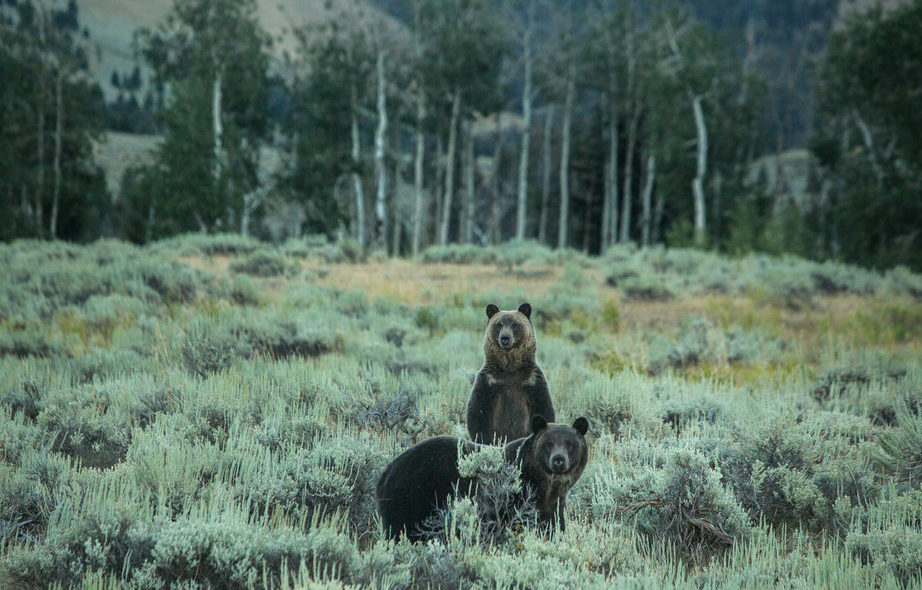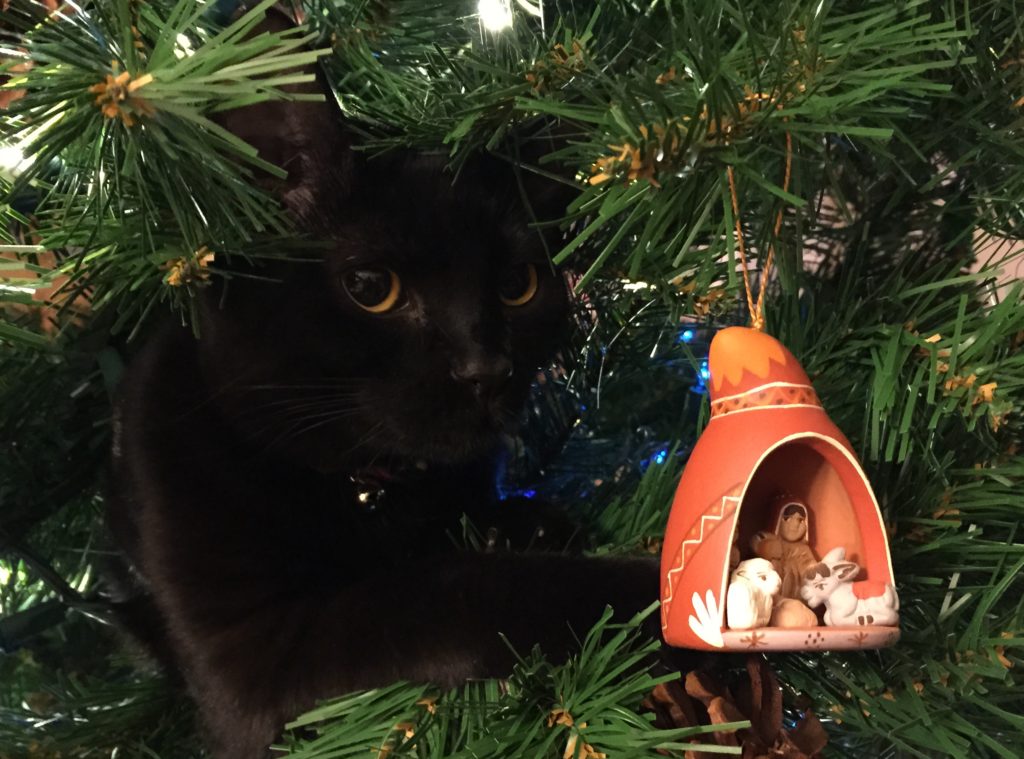It’s easy to write about what good stewardship of God’s earth looks like in the abstract. It’s another thing to live it out.
And it’s another thing altogether when you are trying to make a living off of the land, and your particular neighborhood happens to have grizzly bears.
That’s why it was inspiring to read this article by Kristine Johnson of the Food and Environmental Reporting Network. The article describes how ranchers in the Tom Miner Basin in Montana are raising cattle in ways that prevent predation on their cattle without killing the predators.
You’re probably inundated with information, articles, and books. Nevertheless, I urge you to take the time to read this article and ponder it. And if you can, do so before continuing below.

In the Tom Miner Basin in Montana ranchers are trying to live with grizzlies. (Photo used with kind permission of photographer Louise Johns – www.louisejohns.org)
Here are the traits of good stewardship of God’s earth that this story brings to the fore.
“They deserve to be here, too:” Fundamentally, this story of ranchers in Montana is about people who are living by the conviction that grizzlies are part of the fabric of that country. From their ethical perspective, it’s up to them to figure out how to make a living ranching while allowing the whole fabric to continue to thrive. And that means figuring out how to live with predators.
This parallels what we see in the Bible. In Psalm 50:11 we read: “I know every bird on the mountains, and all the animals of the field are mine.” Without doubt, predators are included in “all the animals.”
In Job 38:39-41 we read:
Do you hunt the prey for the lioness
And satisfy the hunger of the lions
When they crouch in their dens
or lie in wait in a thicket?
Who provides food for the raven
When its young cry out to God
And wander about for lack of food?
In Exodus 23:10-11, we read of the Sabbath concept of giving a parcel of farmland a rest every seventh year which enabled the poor and wildlife to be able to gather food from that land.
And we tend to forget that God made a covenant with both humanity and the rest of life. Wolves and grizzles were included in that covenant as well.
Acting within Creation’s framework: I was struck by the words in article of Whit Hibbard. A rancher and the editor of The Stockmanship Journal, Hibbard is an advocate for low-stress livestock handling. These are techniques that more peacefully and subtly direct the cattle to do what is needed. Knowing how to get your goals accomplished without being a tyrant is the most obvious sign of a good steward. For ranchers that can mean how you handle your cattle and how you interact with your predator neighbors. For all of us, no matter where we are, that means paying attention to how the ecosystems and the animals and plants around you interact and naturally behave and then trying to fit your place, your activities in those patterns.
Apply our creativity: Genesis tells us we are made in God’s image. I’m convinced that one of the primary elements of that image is creativity. We worship a Creator God, a God who is amazingly imaginative and who has endowed Creation with its own creativity. And we are, similarly, inventive beings. Using God’s earth for our needs while purposefully enabling God’s earth to thrive and even regenerate is one of the most important and most challenging puzzles we face as a species and as communities and individuals. This puzzle should bring out in us our best, most thoughtful,and wisest innovations.
It takes a little extra: Doing the right thing is rarely the easy thing. In comparison to the long-time ranching approach of letting the cattle out on the range for weeks on end with little human presence, having someone riding the range every day takes more time, energy, and money. Seeking out specific breeds of cattle that are better able to fight off predators also requires an investment of energy and research. In page three of the latest newsletter of People and Carnivores, you can read of ranchers learning how to put up special fences with fluttering flags attached (a practice called “fladry”) to scare off wolves without harming them. This is another example of thoughtfulness translated into action.
It reminds me of the parable of the good shepherd. In that parable, Jesus reminds us that an attentive shepherd puts his heart into his task and will search out one lost sheep. That’s neither the easy or simple thing. It might not make pure economic sense. Creation is God’s flock. Are we willing to be the kind of shepherds God wants us to be?
You and I cannot be judgmental spectators of the challenges ranchers face. We should be going to the extra effort of supporting farmers and ranchers like these by buying their products, even if it costs a little more. We should also be good stewards of our own land, even if that is just 20′ x 30′ backyard.
Living with loss: I don’t know how I would react to the killing and consumption of an animal of mine by a wolf or grizzly bear. I know it would be wrenching. This is what makes the stewardship ethic of the ranchers profiled in this article so powerful. They are moving forward even as they know there is danger of loss. Somehow, we must be able to be vulnerable enough to accept some level of hurt as we work to be good stewards.
Boundaries and solemn necessities: Any close relationship will have some friction and reasonable boundaries are needed. Some culling of the most aggressive individuals of predator species is a solemn necessity in places where people and nature live side by side, which is increasingly the future of conservation. Conversely, there must also be abundant preserves, reserves, and national parks where predators and other wildlife can thrive without pressure from humanity.
Right stewardship comes from the right heart: It is not stated directly in the article, but it’s clear from the words and actions of the ranchers that are profiled that everything starts from their hearts. Their actions are the fruits of what is in their hearts. Of course, I don’t know if many ranchers would feel comfortable using the language of “fruits of the hearts” to describe their motivations. Nevertheless, consider the qualities in Galatians 5:22-23 that describe the person in whom the Spirit of God has transformed:
“But the fruit of the Spirit is love, joy, peace, patience, kindness, goodness, faithfulness, gentleness, and self-control. There is no law against such things.”
I believe these ranchers and their families, regardless of their faith convictions, are showing us what the fruits of the spirit look like when applied to how we live practically on God’s earth.
Experiences of the world in synch: I became very interested in learning more about what values and family cultures compelled these ranchers to adjust their way of life and to put their ranches’ future on the line in the way the article describes. So I made some inquiries and was eventually able to speak with Andrew Anderson. Andrew grew up on a ranch in Montana and works on the J Bar L Ranch, which uses many of the predator-protecting practices mentioned in the article. He said something very interesting towards the end of conversation:
“When I’m on a horse, working with cattle, knowing that predators are on the land around me, it feels great to feel that I’m part of this natural system and not working against it. I love horses. I love working with animals in nonstressful ways. I love being connected with the landscape. And I don’t have to choose. I can have it all. That’s where the real satisfaction comes from.”
This might be one of the better descriptions of shalom, the peace that the Bible speaks about, the peace that is not just the absence of conflict but is all the elements of the world and life in synch.
Committing ourselves to creative Creation stewardship doesn’t mean our hearts will always be in a state of bliss and harmony. Far from it. This is a challenging, difficult world.
Yet, when we respond to God’s call to tend God’s earth, we will have the kinds of moments that Andrew Anderson does.







